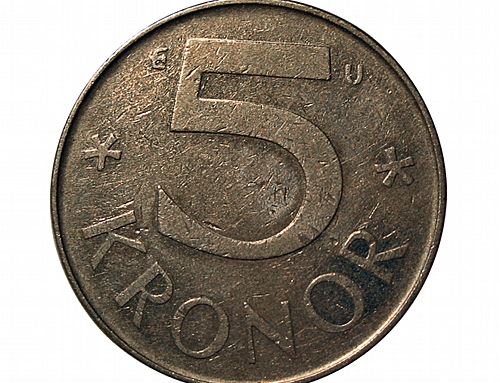Estonian tax system
Estonia has quite simple taxation system
The Estonian taxation system has some advantages for the foreign investor
* After Estonia regained its independence in 1991, it was clear that the country needed a tax system that was compatible both with the limited experience of the taxpayer and the tax administration and which did not hinder further growth of the economy.Therefore, in the years that followed, a tax system was formed with an emphasis on indirect taxes. To keep the system simple, transparent and easy to use, only a few exemptions were allowed, but at the same time, tax rates were kept rather low.
* The general tax burden on private individuals as well as on legal entities in Estonia is close to the average level in the EU.
* Estonia, currently, is far from being the most favorable country in Europe in which to live or do business, based on the tax system alone. However, the Estonian tax system can still offer some advantages for foreign investors, in addition to the fact that the system is still easy to understand and to deal with. The most significant advantage is that corporate income is taxed only when earnings are taken out of the company.
Income tax
* The basis of the Estonian tax system is a unified income tax that was implemented in 1994 and is applied to both individual income and that of legal entities. The tax rate until 2004 was 26%, and it was planned to gradually lower it to 18% in 2012. In 2008, because of the crisis, the further lower of taxes was postponed indefinitely and currently the tax rate is 21% of net income.
* There are very few exemptions to applying the income tax. The most important exemption for legal entities is the tax is assessed against earnings that are taken out of the company, not retained earnings. In other words, it is a deferred income tax: legal entities can make further investments, strengthen capital stock or use the money for other business activities. Income tax is assessed only when earnings are paid out to the company’s owners.
* In the case of private individuals, all three kinds of income – from salaried work, income from business activities and from capital gains – are assessed at a 21% tax rate, regardless of how much the person earns. Since January 1, 2010, private individuals can defer income on reinvested capital gains (like legal entities). To use this exemption, an individual investment account has to be opened at a bank and deposits and withdrawals from the account must be reported to the tax authorities. Any withdrawal that exceeds the amount deposited is taxed.
* In addition, a certain sum of each person’s annual income is except from income tax. In 2012, this sum has been set at EUR 1 728 for one person per year. There are additional exemptions and tax relief for certain groups of persons (for example, families with several children and pensioners).
Social taxes
* Compulsory social insurance payments (social taxes) are assessed on income, which is obtained from salaried labor or engaging in business. Employers pay social tax for every employee as well as for self-employed entrepreneurs, who have registered with the Estonian companies registry (a widely used acronym is FIE) and from municipalities or the state for the unemployed, including invalids, as well as from the parents of newborns.
* The social tax is 33% of the person’s income, in some cases 13%. Although no maximum limit has been set for the social tax and its amount is determined only by the amount of the person’s income, the state has set a minimum payment that must be paid regardless of how small the income is. For legal entities, the minimal payment is set at EUR 91,75 per month for each employee, but in case of FIE–s, the smallest payment is EUR 1 100,96 per year.
Other social fees
* In addition to the social tax for each employee, a month unemployment insurance payment must be made. The unemploy¬ment insurance rate changes each year, depending on the situation on the labor market, as well as on the assets accumulated at the Estonian unemployment insurance fund Töötukassa. In 2012, the payment is 4,2% of income.
* Every employee must make a monthly compulsory payment to the pension fund. Employees pay 2% of their salary into a pension fund of their choice, to which the state adds 2% of the revenues from the social tax.
Value added tax (VAT)
* The Estonian VAT rate, which for almost two decades has been 18%, was raised by two percentage points during the recession to 20%. Together with the raise in VAT, the number of goods and services subject to reduced VAT was reduced.
* The goods and services to which the reduced VAT rate (9%) is applicable are books and periodicals (except for pornographic and erotic magazines), drugs and medical goods and accommodation services, including bed and breakfast. Some re-exported goods, vessels and aircraft embarking on international routes and carrying cargo, goods imported and exported through tax-free zones, and some other things are assessed an 0% VAT rate.
* VAT on services rendered and goods sold have to be declared every month. Companies can apply for VAT refunds to refund the VAT they have paid buying raw materials, goods or services.
* Self employed entrepreneurs (FIE) may use a simplified system, if their annual turnover does not exceed EUR 16 000, they must neither declare nor pay VAT, nor can they claim VAT refunds.
Excise and other taxes
* The state collects excise taxes on the following goods: electricity, fuels packaging, alcohol and tobacco. Since January 1, 2011 the fuel excise tax reached EUR 422.77 per 1 000 liters of lead free gasoline and EUR 392.92 per 1000 liters diesel fuel. The tax on natural gas was EUR 23,45 per 100 m3 and the excise tax on electricity is EUR 4,47 per megawatt hour.
* In September 2011, the government decided to raise the excise duty on alcohol by 5% as from January 2012. The excise tax on beer amounts to EUR 0,057 per 1% of volume of alcohol per liter, and that on strong alcohol to EUR 0.768 per liter. The tobacco excise duty will also increase from January 2012. Cigarettes are subject to EUR 42,18 euros/1 000 pieces of excise plus 33% of the retail price per piece.
* Owners of trucks have to pay a tax on heavy vehicles, which starts at EUR 32 per year.
* There is also a land ownership tax in Estonia, which depends on its location, and is assessed at 0,1% to 2,5% of the value of the land per year. The tax is collected by the Tax and Customs service Maksu-ja Tolliamet (MTA), but the municipalities set the rate municipality and the municipalities also use the taxes that are so collected. Using a complex method of calculation, MTA each year sets the basic rate and the value of the land.
* There are several local taxes and fees that can be assessed by municipalities. In fact, only a few municipalities have used this possibility. After the trade tax was implemented in Tallinn, the parliament stated to repeal local taxes, and this came into force on January 1, 2012.
Useful links
Estonian Tax and Customs Board – www.emta.ee
Ministry of Finance – http://fin.ee
Photo: Stock.XCHNG





